Solutions architect and partner at FiveForty°, Jérôme Piquot shares his vision of Open Source with us and sheds light on the distributed applications he is working on. A little bit of inventory ...
How long have you been involved in Open Source projects and how did you come to this principle of collaboration?
JP : I started in the early 90s, in what we then called news groups. At that time, only a small number of people had access to the internet, and of course, available information was limited to say the least. A need for sharing was emerging. We made friends with people through discussions to settle problems, or who had similar goals. The first developer communities are born of this willingness to do things together.
Over the years, can you give some examples of the work you have done?
JP : My first Open Source project concerned Gedimat on a management and invoicing software for the wholesalers. It revolved around orders, delivery paperwork and invoicing. A kind of very modest ERP embryo that did not manage more than sales. The Open Source part was a web application written in C ++. HTML screens were generated using XSLT. The prints, in PDF format, were made via XSL-FO and Apache FOP.
Then came POS, also in Open Source. This management module for cash registers did not exist at the time, nowadays, it is integrated in your Microsoft solution. Did it use technologies that you still offer today?
JP : I've always been a bit of a techno geek. It is true that I was ahead of the times and therefore these technologies are all current today. In particular in AX which used to use XSLT. Then I returned to Open Source for Lagardère. Today, I am moving forward on a new area to manage the concept of distributed applications.
In two words?
JP : At the moment, applications can only be run on a single processor. And that's way too slow. We must completely change our paradigms of development so that the application, when it runs, can do this on all available processors, at the same time. A classic application, if it has 100 additions to make, it will calculate each addition one after the other on the same processor. A distributed application will run all 100 additions at the same time, on 100 processors simultaneously. It seems simple to implement for a calculation but becomes much more complicated when processing the data that is itself distributed. This imposes completely different programming models, such as the use of the actors model.
You have also published in Open Source a management tool For SQL backups. Finally, what kind of feedback do you get from these experiences?
JP : A certain idea of sharing. When developing, one makes great use of the community’s work. In return it is natural to do something on your own to thank all the people who have helped you. You have to give back to others what saved you time for them to go faster too. Open Source takes a lot of your personal time. A time that one don't always have. It’s a state of mind.
Sharing is a core value of FiveForty°, can you see in it
a link with the principle of Open Source?
JP : FiveForty° is based on values, even moral ones, that we find in this community of individuals who make up the company. We takes advantage of a community and we give back to it by your activity. We take and we give back, that's the logic of the Open Source which is much more than just code that we share on the Internet. It is also about know-how, the exchange of ideas, experiences, mutual assistance. So many concepts at work at FiveForty°, that's true.
Both in a professional and personal capacity, what free software do you use?
JP : CMS like Orchard Core, a website creation tool initiated by Microsoft. IdentityServer4 to manage authentication. But also Orleans and Dapper, frameworks to manage the actors and to create distributed applications. The other key piece of Open Source is the reporting of bugs. In this context, .Net Core is a good reliability tool. This framework has been 100% Open Source for three years. It reflects a major change at Microsoft that is starting to get away from a pure proprietary logic by opening the codes of its software infrastructures. With the exception of Windows.
What changes do you notice and what future do you think for Open Source?
JP : The advantage of Open Source is also measured in the hybrid world of ours. Barely fifteen years ago, Mr. Everybody was carrying out his little project in his corner with a reduced community. Today the Open Source projects have changed their dimension and are very often conducted by a software publisher. Speaking of incidents, we can now go and correct the publisher's code directly, and this code, once validated, will be integrated into the solution. It's a real exchange process between the users and the publisher. The editor does not lose anything, it also gives cohesion to the whole. He remains a winner with much more reliable products thanks to a huge user testing base. More generally, Open Source is an asset insofar as it allows very significant cost sharing. When twenty-some companies use an Open Source publication, the community maintains it and multiplies its performance. The result is a tool of power and remarkable agility where the short life cycle of an evolution can be treated in continuous integration. And the more of us, the faster we go.
Can you give examples of the impact of Open Source ...
JP : Google, with Chrome, made the product ultra-stable by letting the Chromium source code be Open Source. It gave it a technological advance that Microsoft could not follow with Edge. It was forced to make a new version of Edge based on the Chromium project. The publisher is essential to the overall strategic vision. For example, FireFox, which is independent but struggles to have a clear roadmap for its product, may gradually disappear. Note the leverage effect due to the editor in the Open Source and its typing power associated with the community which multiplies the tests. It generates also the contribution of ideas, improvements as for Orleans, optimized in performance by a Russian contributor. Dapper, started by Microsoft, which goes further, is a project that will replace Microsoft Service Fabric. Many new Microsoft products, start in Open Source and not necessarily with in-house technologies. Dapper uses Go, which is a Google language, for example. Simply because it is more suited to handle certain aspects.
You point out that today we are arriving, in terms of Processor speed at the limits of physics with 5GHz. What consequences can be expected in the medium and long term?
JP : The consequence is that power can no longer be obtained just by the CPU, the central processing unit of the computer. It used to be easy. These problems were settled by replacing an old machine with a newer one that was twice as fast. Today, one must be be able to add the machines to each other. However, there is not 1% of current applications in the world who are able to handle such horizontal elasticity. This implies that potentially, tomorrow there might be an overhaul of the ERP to consider. ERPs are large monolithic applications that manage very poorly parallelization of processing tasks. To face the volumetry of tomorrow and the real time requirement of the customers, these monoliths need to be rewritten as distributed apps, organized in micro-services or nano-services (actors).
Are not some French companies being ossified by their IT systems?
JP : Sometimes some end up suffering it. To summarize, it takes them a year to add a single button! Often the applications are so coupled with each other within an IT department, that touching any line of code in any of them, is a perilous exercise. A game of mikado whose domino effects are impossible to master. This is why all software architecture experts are recommending to decouple applications. This makes it possible to replace a single brick without any impact on the others. What has changed these last years, is that we applying this decoupling within an application itself. Each module of an application must itself be decoupled from the others. Thus allowing to make a module evolve without having to fear regressions in the rest of the application. The number of regressions is considerably reduced, maintenance is simpler, the changes are less complex to achieve and they are delivered in shorter timeframes.
This modularity makes it possible to architect its application in small scalable autonomous units (micro-services) which are easily deployable in an internal, cloud or hybrid infrastructure.
When a need for elasticity arises to manage peaks In demand linked to seasonal variations, this power issue can be addressed in minutes with tools like Kubernetes that deploy new resources and deal with peak workloads.
But one must be elastic also in the other direction: be able to reduce resources when needs decrease. Now, the technologies make it possible to plug cloud machines on the internal data center. The classic ratio, 20% cloud and 80% internal on-premises, is a reasonable hybridization for the company that wants to arm itself against variations to come.
Finally, how is your collaboration in Open Source projects a plus for FiveForty° customers?
JP : In this universe, advancing at a forced march towards openness, having a partner who aggregates innovation with the open source mindset to understand the progress of the new technologies allows the customer to follow these developments in the Dynamics world with greater peace of mind.
Interview by J. Lascaux,
Founding partner of FiveForty°





